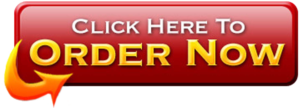Improving athletic performance using lis coaching contributions
Improving athletic performance using lis coaching contributions
Improving athletic performance using lis coaching contributions
Description
In the book “The Perfection Point” by John Brenkus, ESPN’s Exercise Science Guy, he points out different types of analysis we can use to determine the
perfection of a skill/movement/event. As an example he uses the 100m sprint to determine the fastest humanly possible time.
I won’t spoil the book but it is awesome how he gets to the number.
Improving athletic performance using lis coaching contributions
On page 12 of “The Perfection Point“, Brenkus talks about the 4 distinct phases of the 100m sprint…
1. Reacting to the gun
2. Getting out of the blocks
3. Accelerating to top speed
4. Hanging on for dear life at the end.”
Not quite biomechanical terms, but you get the picture. As coaches and trainers we need to understand all aspects of a movement. LI (2012) in the article:
“How can sport biomechanics contribute to the advance of world records and best athletic performance?“, discusses similar aspects to sport skill phases.
Li (2012) states coaches and athletes have the ability to…
1. Improve an athlete’s physical capacity
2. Find innovative techniques within a given sport
3. Help athletes interact with their environment.
Instructions for this week’s Forum:
Using your chosen athlete discuss how you as a coach, trainer, or athlete, assist him/her with each of Li’s three Coaching Contributions. Stick to how you can do these things from the strict viewpoint of sport biomechanics, analysis, & teaching.
My elite level athlete name is Trevor, he sport is world’s toughest mudder, where he was the champion this years, the sport would be considered long distance obstacle course, the dynamic movements would be long distance running, sprinting, high jumping and climbing.
References:
Bartlett, Roger – Introduction to sports biomechanics: Analysing Human Movement Patterns, 1997.
pp. 28-46
Kirk, David; Cooke, Carlton; Flintoff, Anne – Credo Reference – Key concepts in sport & exercise sciences, 2008. Source: Library (Credo Reference) Publish Date: 09/05/17
Part 1 Biomechanics – Introduction; Kinematics; Force; Impacts; Work, Energy and Power; Angular Kinetics; Projectiles; Fluid Mechanics
Part 2 Exercise Physiology – Growth, Maturation, Motor Development and Learning.
Li, L. (2012). How Can Sport Biomechanics Contribute to the Advance of World Record and Best Athletic Performance? Measurement in Physical Education & Exercise Science, 16(3), 194–203.
Zatsiorsky, Vladimir M. – Biomechanics in Sport: Performance Enhancement and Injury Prevention, 2000. Articles 3 & 4, pp. 33-86
Use the following coupon code :
NursesHomework


